- info@naturebylennart.com

Bali is one of those places that hardly needs an introduction for most people. For years, it has been known as a haven for European vacationers looking to go a bit farther than the Spanish sun and perhaps also interested in learning the basics of yoga. But Bali also hosts a variety of fascinating bird species! For me, Bali was primarily a stopover en route to a place that dóes require an introduction for many: the country of Timor-Leste, or East Timor. In that country, I hoped to photograph blue whales underwater. But first, a stopover in Bali!
Last year in India, I had the problem of missing a domestic flight because my international flight was delayed. I wanted to avoid that issue this time by staying a bit longer in Bali before catching my flight to Timor-Leste. I had also never been to Bali or even Indonesia, so this seemed like a great opportunity to experience more of the country than just the airport. In any case, I wanted to see the endemic Bali Starling or Bali Myna.
I decided to stay on Bali for three full days. To see as many birds as possible during that time, I searched for a local guide. That’s how I found Bali Birding Tour.. They offered both day trips and multi-day trips on Bali and other Indonesian islands. A a solo traveler, it’s often relatively expensive, but I found the price reasonable, and with a limited number of vacation days, I wanted to make the most of my time on Bali.
I arranged with Bali Birding Tour over WhatsApp that they would pick me up from my hotel in Denpasar on Monday, October 14, at 5:00 a.m. From there, we would go birdwatching, and I would be dropped back in Denpasar on Wednesday evening, October 16. My flight to Timor-Leste was scheduled for Thursday, October 17. After making these arrangements, it was just a matter of waiting until I could finally go on vacation!
On Friday, October 11, I departed from the Netherlands. Without much trouble, I arrived in Bali. Around my hotel, I entertained myself by photographing Cave Swiftlets flying nearby.


Cave Swiftlet
On the beach, airplanes flew low overhead, but so did a number of bats!

I rarely get the chance to photograph bats in flight during daylight, so this was a special opportunity. I still need to identify the species, but it was exciting to see them regardless!



Bat sp.
I also got to photograph some more Cave Swiftlets.


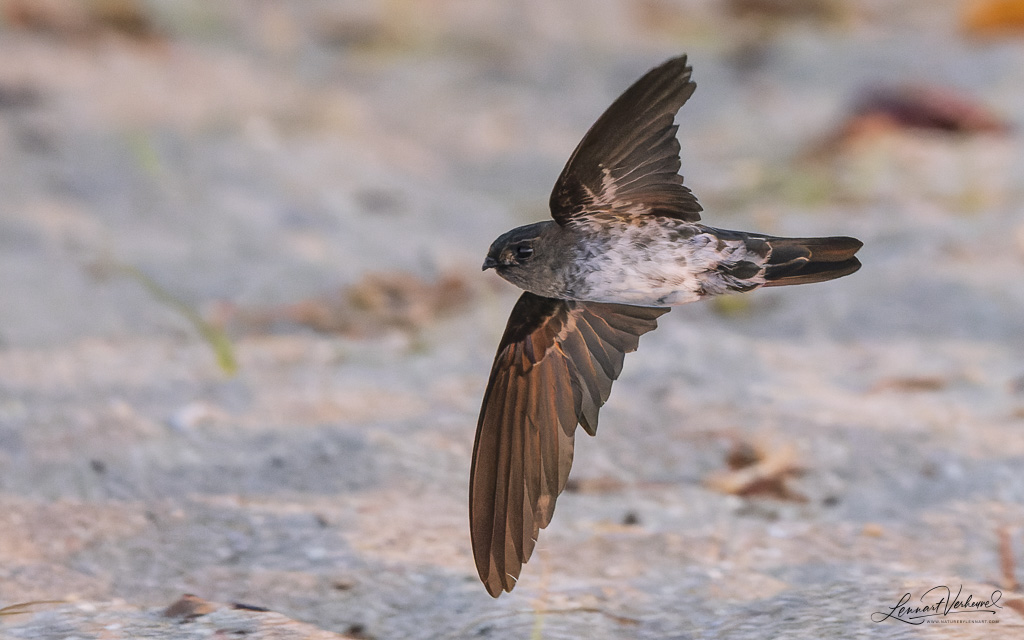
Cave Swiftlet
Early on Monday morning, the birding began in earnest! A little after five, my bird guide Diyan and our driver Marcus picked me up. Once I was collected, we drove to the eastern tip of the island. The journey turned out to be quite long, taking about five or six hours in total. Thankfully, there was plenty to see along the way!
Our first stop was somewhere in the mountains, where a local guide led us to a hut.

My guide turned out to be able to predict exactly which species we would see in many locations, and he was spot on. I was thrilled when a Javan Banded Pitta hopped into view very quickly—a stunning and iconic bird!


Javan Banded Pitta (female)
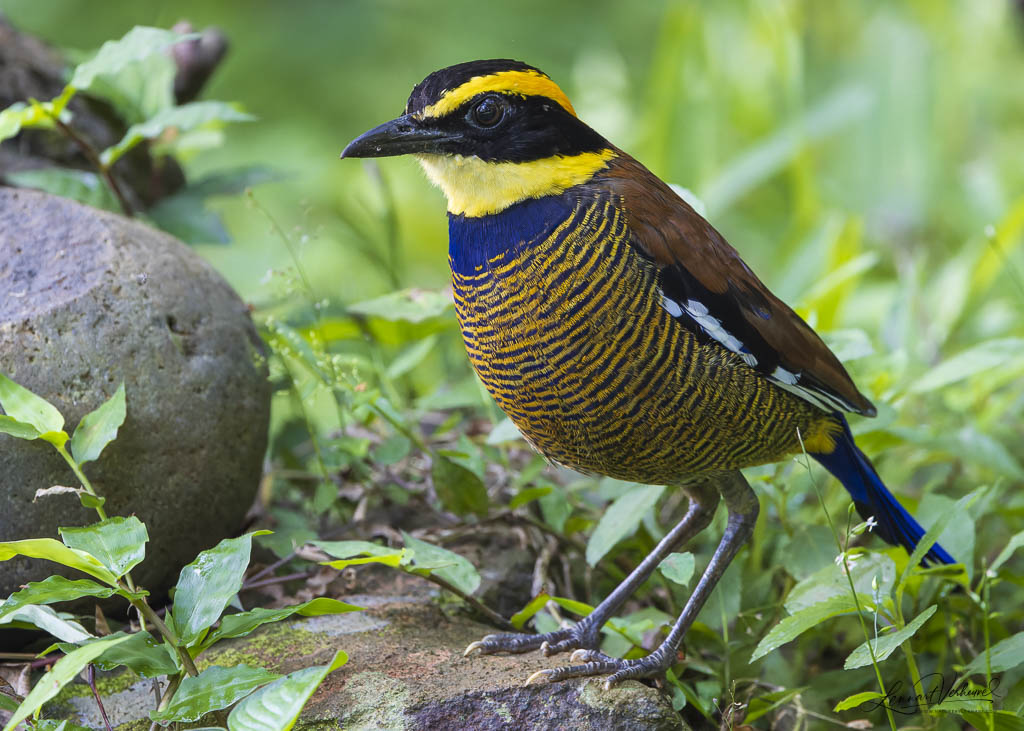
Javan Banded Pitta (male)
Not long after, we were treated to the sight of the beautiful Orange-headed Thrush. What an incredible thrush that is!

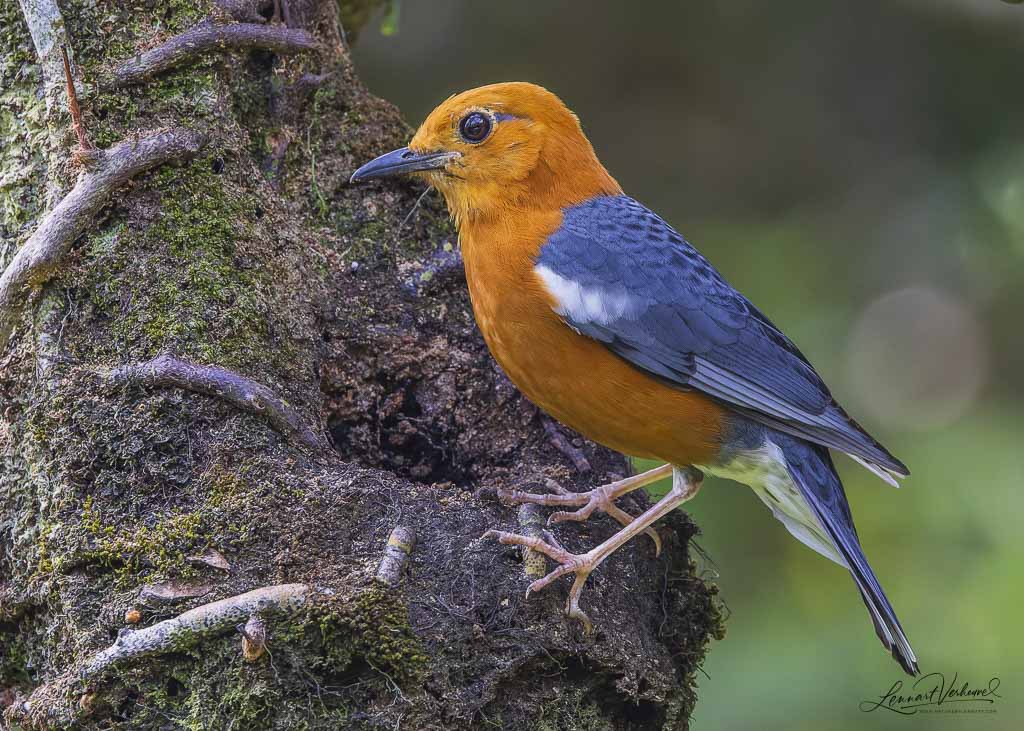

Orange-headed Thrush
Slightly less spectacular but still very much worth noting were Crescent-chested Babbler, Asian Emerald Dove, and Orange-bellied Flowerpecker.


Crescent-chested Babbler


Asian Emerald Dove



Orange-bellied Flowerpecker
The next stop was a local temple, which turned out to be a great spot for Scarlet-headed Flowerpecker.

This gorgeous flowerpecker even allowed me to photograph it in flight—a rare treat!


Scarlet-headed Flowerpecker
We then drove the final stretch to reach the vicinity of Bali Barat National Park, where we would spend the following day as well, only heading back toward Denpasar the morning after.
It would be too much to list every bird I saw, so I’ll focus on the highlights.
One highlight was a stop at a small colony of Blue-tailed Bee-eaters. These beautiful counterparts to the Blue-cheeked Bee-eater are stunning to watch, and from the car, we could admire them in flight as well. I couldn’t resist investing some time in flight shots. Just 15 minutes watching already yielded some fantastic images!














Blue-tailed Bee-eater
The Chestnut-headed Bee-eater present in the same area also deserves a mention.

Chestnut-headed Bee-eater
Of course, the absolute highlight for me was finally seeing the Bali Myna! In Bali Barat, there was a spot where these birds were fed every evening. This species is critically endangered, and there’s an extensive reintroduction program in place. Birds that are acclimating to life in the wild are kept in a large aviary located in the middle of the park. Feeding takes place there for both the birds in the aviary and those already flying freely. Among the latter are individuals released through the program (identifiable by their leg rings) and birds born in the wild.
This provided a wonderful opportunity to observe this stunning species up close.


Bali Myna
I worked hard to capture some decent flight shots, and the results turned out quite well.


Bali Myna
Once I was satisfied with my photos, I quickly went for a walk around the area. That’s when I unexpectedly encountered a large group of Javan Langurs! It was great to see this endemic monkey species as they were feeding.


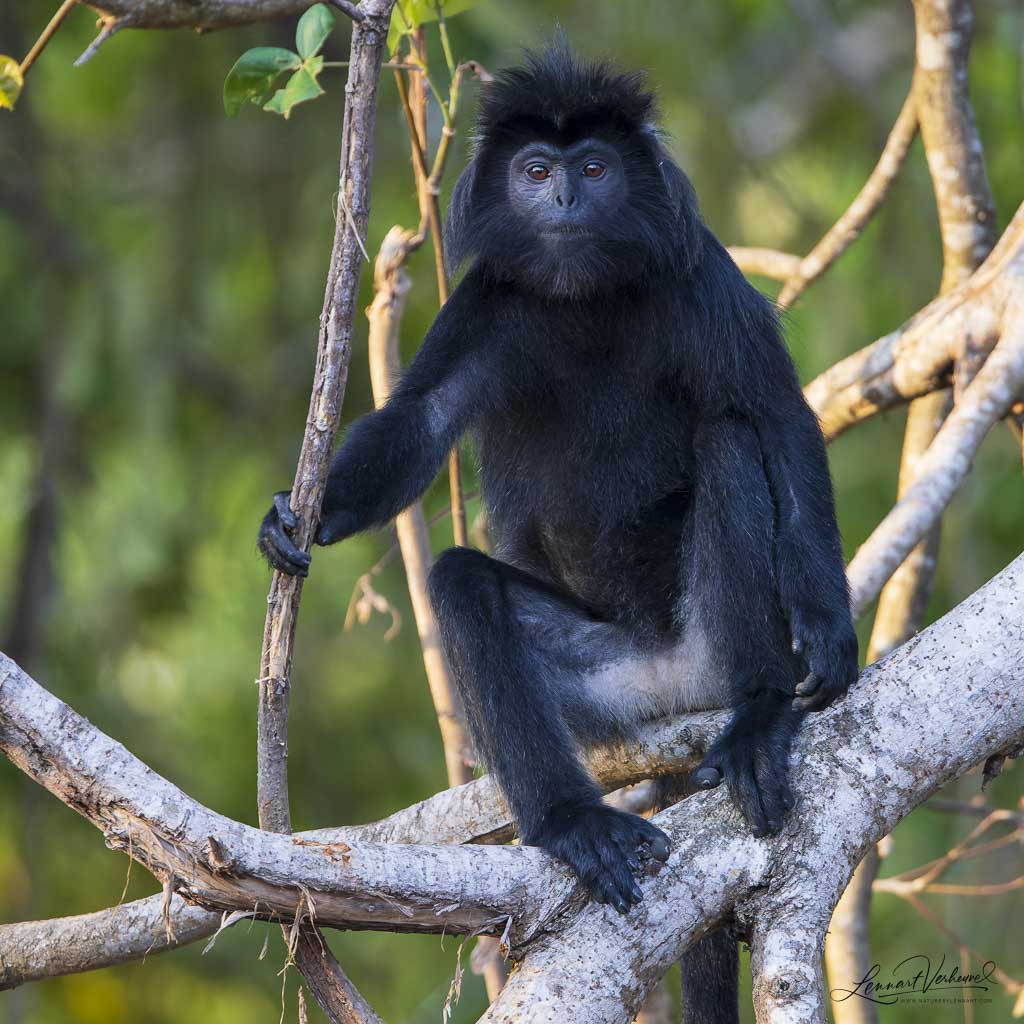




Javan Langur
This rounded off the first day perfectly. However when night fell, there was still one more species to try for: Sunda Scops Owl! My guide managed to locate it fairly quickly, though it took a few attempts. By 8 p.m., this species was also “in the bag,” so I could sort through my photos and get ready for the next day.

Sunda Scops Owl
The next day began early once again. We stationed ourselves in a hide to spot the Javan Kingfisher.

In front of the hide, there were plenty of Eastern Cattle Egrets, naturally accompanying the nearby cattle.

Eastern Cattle Egret
It took some time for the Javan Kingfisher to make an appearance, but eventually, it flew in. In no time, the tray of offered insects was empty.




Javan Kingfisher
Further out in the field, we spotted more Javan Kingfishers, allowing for a nice “in the landscape” shot as well.

Javan Kingfishers
After that, we returned to “regular birding”. A highlight was seeing the Black-winged Myna late in the morning. This species is also critically endangered and much harder to find on Bali than the Bali Myna. Luckily, we quickly found a few individuals, and we even saw one in the same shrub as the Bali Myna!


Black-winged Myna

Black-winged Myna and Bali Myna
In the afternoon, we headed to another hide. Among the birds that showed up there was the Rufous-backed Dwarf Kingfisher. This tiny, elegant kingfisher allowed for excellent close-up views near the hide. It was definitely one of the highlights of my time on Bali!




Rufous-backed Dwarf Kingfisher
I worked hard to capture some flight shots of this species as well, and I was quite pleased when I managed to succeed on a few occasions. With limited light in the forest and a fast-moving small bird, it was a real challenge!



Rufous-backed Dwarf Kingfisher
Other species that appeared included the Javan Banded Pitta again (a bird you can never get enough of), Hair-crested Drongos, and a Lineated Barbet. The drongos even got into a scuffle with a Horsfield’s Treeshrew that was eager to snack on the offered food. It was also a treat to see this small mammal up close.

Javan Banded Pitta

Hair-crested Drongo
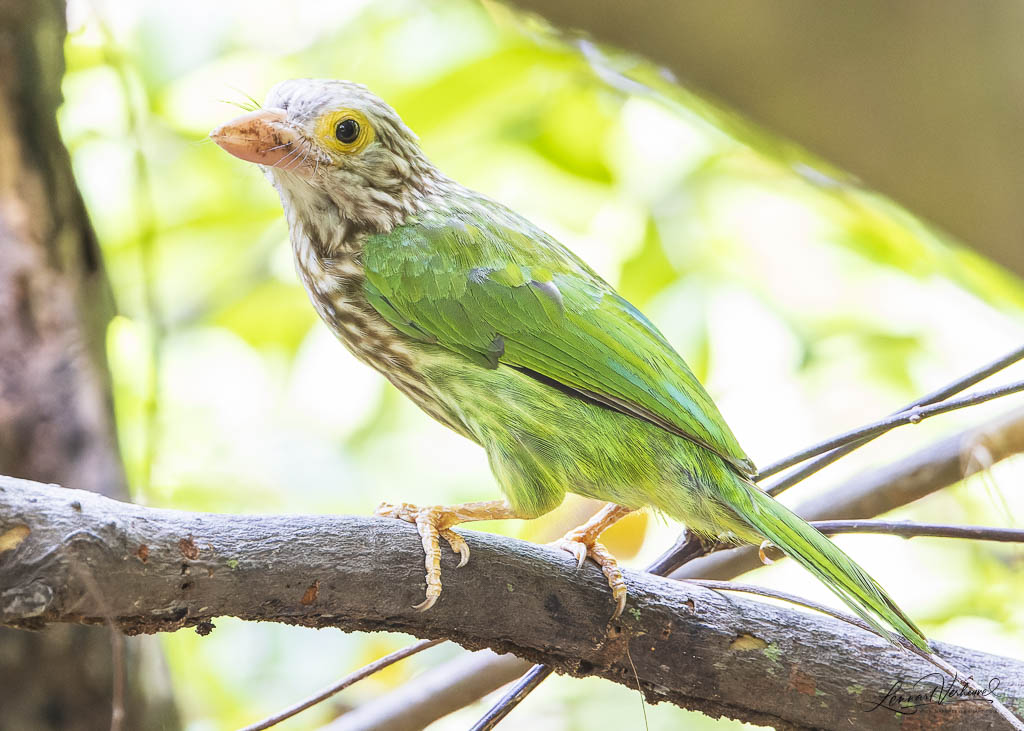
Lineated Barbet

Hair-crested Drongo and Horsfield’s Treeshrew



Horsfield’s Treeshrew
Along the roads, Long-tailed Macaques were easy to spot as well. True to their reputation, these “strike teams” were waiting for snacks from passing cars. Macaques can become quite aggressive when they get too accustomed to people, but fortunately, this group wasn’t too bad.


Long-tailed Macaque
After the forest, we made a quick visit to the coast to tick off some waders. The most notable species was the localized Javan Plover.
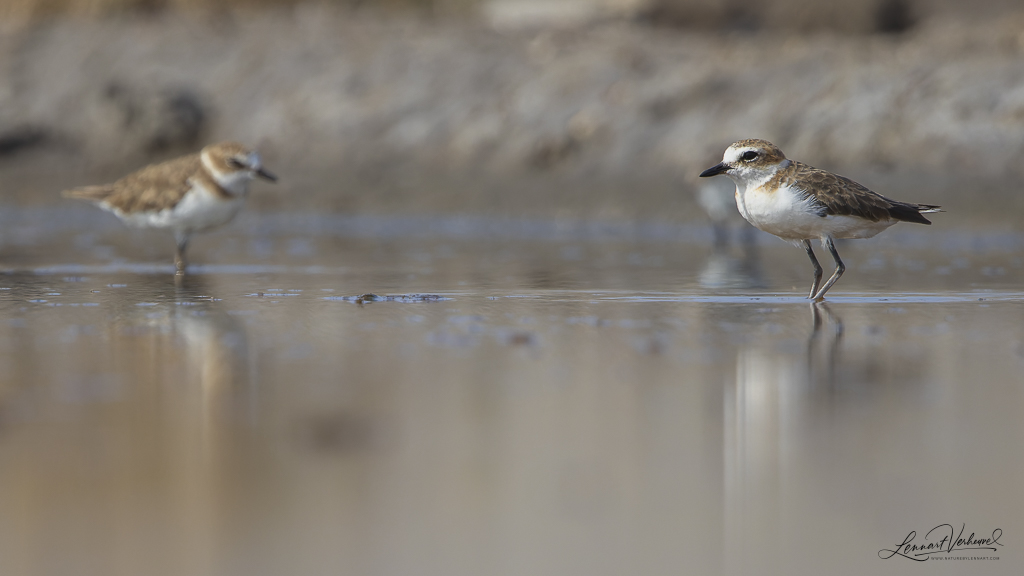
Javan Plovers
We also saw other waders of interest to European birders, such as Terek Sandpiper, Grey-tailed Tattler, and Greater Sand Plover. Unfortunately, they didn’t come close enough for truly good photos.
One species that did show well and surprised me was the Savanna Nightjar! On our way back along the beach, we flushed a few birds that were sleeping there. I hadn’t expected to find this species at this location, but it was very cool to see them flying over the sea in daylight!

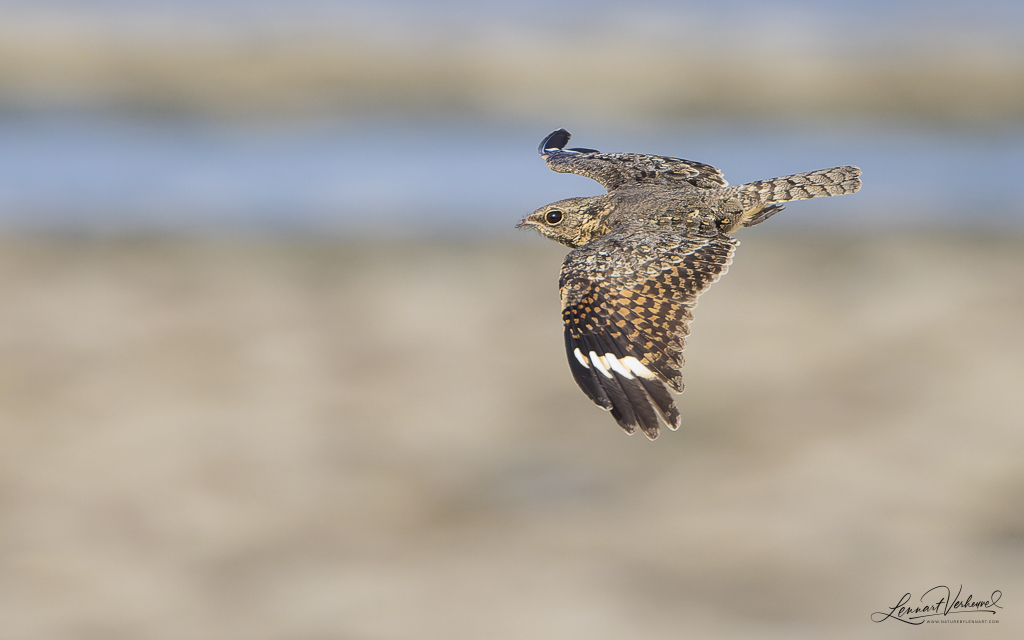

Savanna Nightjar
We ended the day with a group of beautiful Green Junglefowl—one of the original wild chickens! I had seen the Red Junglefowl in India before, which is even more closely related to our domesticated chickens, but it’s likely that some Green Junglefowl blood has been mixed into them as well. In any case, I thought it was a stunning bird species, with its multicolored comb and wattles.
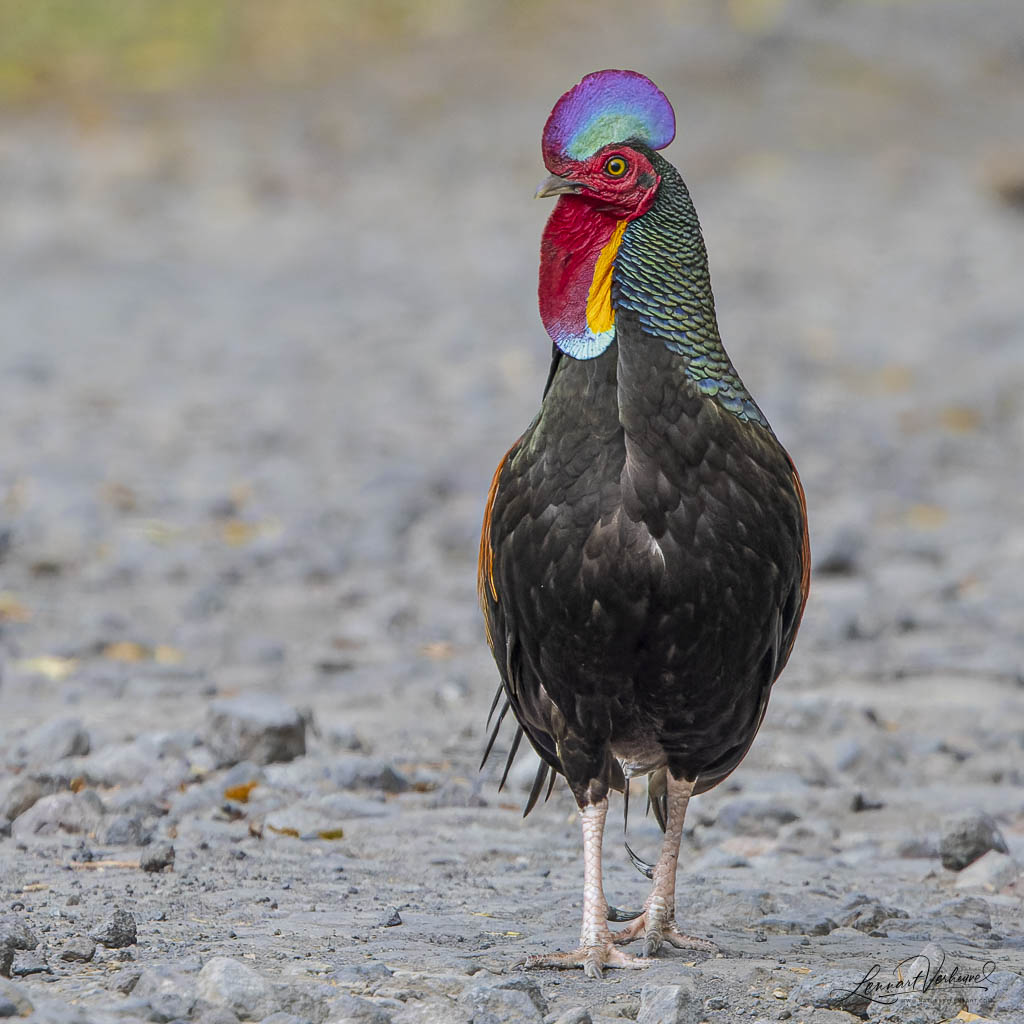



Green Junglefowl
That evening, there was no need to go “owling,” as I had already seen the owl that could be found here at night.

The next day was already my last day on Bali. Naturally, we got up early once again. After a few hours of driving, we stopped at Lake Tamblingan. There, we had breakfast and went birding.

Two Sunda Warblers showed themselves very well, much to our delight.

Sunda Warblers
I was especially pleased to get a sighting of the Javan Owlet, though unfortunately, I couldn’t manage to take good photos.
On the other hand, I had great success photographing the endemic Javan Whistling Thrush, which terrorized the feeding area set up near the bird hide.

Javan Whistling Thrush
At the same hide, I also spotted the Snowy-browed Flycatcher, a beautiful small flycatcher that didn’t dare venture too close to the Javan Whistling Thrush.

Snowy-browed Flycatcher
Our next stop was the Bali Botanical Gardens, where I saw several new species.

One highlight was the Flame-fronted Barbet, my last barbet species on Bali.

Flame-fronted Barbet
The other barbets I had seen were the Lineated Barbet, which I’ve already mentioned, the Coppersmith Barbet, and the Yellow-eared Barbet.

Coppersmith Barbet

Yellow-eared Barbet
I was also pleased to improve my photos of the Velvet-fronted Nuthatch, which I find to be an incredibly beautiful species. I had seen it once before on Borneo but didn’t manage to take good pictures at that time. While there’s still room for improvement, these shots are much better than what I had before.

Velvet-fronted Nuthatch
The next stop was an unexpected one: Bali’s largest bus terminal!

Not a very natural location, but it’s home to one very special species: the Java Sparrow. While this bird is considered an invasive exotic species in many areas, it’s sadly highly threatened in its native range. On Bali, this bus terminal is the go-to place to find them. And it’s actually a very attractive species to see.

Java Sparrow
By this point, we were already near Denpasar, but there was one more stop before I’d be returned to my hotel: the Lagoon Nusa Dua. This site treats wastewater, but it’s also an excellent spot for observing waterbirds, with plenty of mangrove trees around.
In this mangrove landscape, I enjoyed photographing the Purple Herons present. I also spotted the elegant Little Pied Cormorant.

Purple Heron

Little Pied Cormorant
The highlight for me, however, was the tiny, ice-blue Cerulean Kingfisher. This endemic species was one I still wanted to see on Bali.


Cerulean Kingfisher
Naturally, I worked hard to get some in-flight photos here as well. I spent a good hour trying. Patience was required since the bird didn’t fly by often. Fortunately, I eventually managed to capture a few shots I was happy with.




Cerulean Kingfisher
The next day, I left Bali with a sense of satisfaction. The past three days had been incredibly rewarding—I had seen numerous new bird species for me and actually captured some nice photos along the way. But now, the true adventure awaited: heading to East Timor and the blue whales!
Copyright of articles and pictures on naturebylennart.com remains with Lennart Verheuvel and without permission they can not be used in any way

10 comments so far
Wouter RoepelPosted on9:14 am - Jan 27, 2025
Dag Lennart, wat een mooie serie vogels heb je op Bali gezien en vast gelegd. Ik kan niet wachten dat wij er zelf heen gaan in juli. Nog bedankt voor de tips die je me hebt gegeven voor het vogelen op Bali. Ik zag trouwens ook de mooie foto’s van de brileider op waarneming.nl met hoeveel mm lens heb je die genomen? en met welke lens werk je en met of zonder TC.
adminPosted on9:28 am - Jan 27, 2025
Hoi Wouter, dankjewel! En veel succes gewenst daar natuurlijk! De brileider was inderdaad het absolute hoogtepunt van mijn weekend! Ik denk dat ik de serie ook met een berichtje op mijn website zal plaatsen. Mijn foto’s van de brileider zijn allemaal gemaakt met mijn Canon RF 100-500 en 1.4 converter (met mijn Canon R5). Op Bali heb ik de converter niet zoveel gebruikt omdat het de scherpstelling van vogels in vlucht negatief beïnvloedt.
Piet Hein SchuijffPosted on1:09 am - Mar 25, 2025
Hoi! Leuk verhaal en waanzinnige foto’s. Zou jij de locatie van de vogelhutten met mij willen delen? Dank!
Lennart VerheuvelPosted on8:20 am - Mar 25, 2025
Thanks! De locaties kan ik helaas niet met je delen omdat ik die alleen via Bali Birding Tour heb kunnen bezoeken. Evt kun je met hen contact opnemen.
Piet Hein SchuijffPosted on4:30 am - Mar 26, 2025
Begrijpelijk, ik heb contact met ze opgenomen, dankjewel!
Aditie SnPosted on11:35 am - May 20, 2025
Wow!! What stunning photographs! Which camera + lens did you use for these photos?
Lennart VerheuvelPosted on6:53 pm - Jun 20, 2025
Thank you :). Most of these were taken with the Canon R5 + the Canon RF 100-500
stefan kohrsPosted on12:34 pm - Jun 15, 2025
absolutely love your pics
Pieter van Oudtshoorn.Posted on10:29 am - Jul 3, 2025
Wonderful photos. I’m keen to do the same trip some time. Did you find the guide up to scratch and what did he charge? I have the Canon R6 and the 100-500 lens but would like to change to the R5 or the R7. So many birders talk highly of the R7 but I’m leaning towards the R5. What is your opinion? Then there is the R7mk.11 coming.Let me know what you think
regards Pieter.
Lennart VerheuvelPosted on11:16 am - Jul 3, 2025
Hi Pieter,
Thank you! I looked the company up through some reviews. I can certainly recommend them. On their website you can already see some quotes for various options. If I remember correctly I paid 900 USD for 3 days on which they picked me up at Denpasar at 5 in the morning and dropped me off again at 6 in the evening 3 days later. You can always get in touch with them and see what they can do for you. They communicated with me through Whatsapp.
Regarding R5 vs R7. I made the conscious choice for the R5. It is a full frame camera which offers 45 megapixels versus the R7’s 32. With the cropfactor of the R7 that’s more or less the same amount of cropping possibility. The R7 is slightly ahead, but not much and that would be the only reason for me to consider the R7. The R5 has better ISO performance, better working AF and less distortion in the images. However the R7 is a lot cheaper obviously. So it would depend on what you are looking for. R7II will most likely come out in 2026 and will probably offer some options that might make it a preferred choice over the current R5, but then you would have to wait a bit of course… Good luck with the choosing! If you need a good perspective on the different camera’s for bird photography I would recommend the Youtube channel of Jan Wegener. He tests them all out.